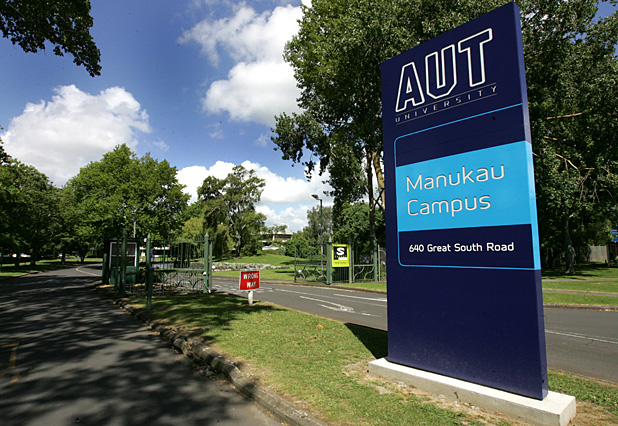Meet some of the youngest universities in the QS World University Rankings, and find out how they’ve managed to reach the top tier so quickly.
Given all the work that goes into becoming a world-class university - building a reputation, establishing partnerships, attracting top students and academics - the youthfulness of some of the institutions in the rankings is striking. TopUniversities.com explores some of the key ingredients behind their rapid success.
1. HKUST, Hong Kong
 Established: 1991
Established: 1991
World ranking: 33
One of Asia’s young high fliers, HKUST has maintained a fairly stable position within the world’s top 50 over the past five years. It scores particularly well for the international diversity of its staff and students, and has focused primarily on developing courses in sciences, technology and business.
Recipe for success? According to HKUST’s president, Prof Tony F Chan, the university started by drawing on the best educational and management practices from the US and UK systems. It has also focused very successfully on attracting academics from some of the world’s most established institutions.
What next? International collaboration is at the heart of the university’s ongoing plans, with one upcoming example being a partnership with Oxford University to provide executive education courses for public sector officials in Asia.
See the QS University Rankings for Asia >
2. Nanyang Technological University (NTU), Singapore
 Established: 1991
Established: 1991
World ranking: 47
Another elite ‘Asian Tiger’ institution, NTU has secured a big share of competitive government funding, which has aided the establishment of research facilities such as the Earth Observatory of Singapore, Singapore Centre on Environmental Life Sciences Engineering and the Institute for Media Innovation – to name just a few. Scoring well across all indicators in the rankings, NTU is among the world’s top 10 universities for the international diversity of its faculty.
Recipe for success? NTU president Bertil Andersson highlights the university’s focus on revamping hiring, tenure and promotion processes, which has made it “increasingly attractive for both established and young top academics”. He adds, “As Singapore is one of the most cosmopolitan cities in the world, it’s very easy for foreigners to adapt to life and feel at home here.”
Andersson also points to NTU’s success in attracting major industrial partners – companies such as Rolls-Royce, Bosch and Siemens have all established research facilities at NTU.
What next? Later this year, NTU will open the doors of its new Lee Kong Chian School of Medicine, run in partnership with the UK’s Imperial College London – widening the university’s intake of top students, Andersson predicts. Beyond healthcare, other key focus areas for the university include interdisciplinary education, sustainability, new media and innovation.
More about studying in Singapore >
3. Universitat Pompeu Fabra, Spain
 Established: 1990
Established: 1990
World ranking: 266
Among the youngest European universities in the rankings, UPF claims to be Spain’s most internationalized university – and this is backed up by its high score in the rankings for internationally diverse faculty.
Recipe for success? Like his fellow university leaders, rector Josep Joan Moreso is keen to stress the importance of attracting (and retaining) talented people from around the world. He says UPF’s success in doing this has involved rigorous assessment procedures for permanent hires, a focus on attracting talented researchers at the thesis-completion stage, and good career development initiatives.
What next? The forthcoming UPF Research Park aims to bring greater international visibility to the university’s researchers in fields such as social sciences, humanities, and communication and information technologies.
Five of the world's best universities according to employers >
4. Bond University, Australia
 Established: 1987
Established: 1987
World ranking: 380
Bond entered the rankings for the first time in 2012/13, with an impressively high position. It scores particularly well for employer reputation, faculty-student ratio, and the international diversity of staff and students.
Recipe for success? Bond prides itself on its commitment to small-group learning and personal mentoring, and its state-of-the-art facilities, which have proven attractive to students and academics alike. The university has also been innovative in developing new programs, such as an MBBS which allows students to complete a medical degree in less than five years.
What next? The new Bond Institute of Health and Sport will provide more opportunities for the university to forge industry partnerships, and will see Bond take the helm of Australia’s largest sports science research project.
5. Auckland University of Technology, New Zealand
 World ranking: 451-500
World ranking: 451-500
Established: 2000
Also a new entry for the 2012/13 rankings, AUT is in a sense only technically (excuse the pun) as young as it seems. Its 2000 birth-date in fact refers to a change in status – when Auckland Institute of Technology was granted the ‘university’ title.
Recipe for success? AUT enjoys a strong reputation with employers, and investment in research seems to be paying off – it’s already among the world’s top 600 in the indicator for citations per faculty member, often one of the toughest areas for new universities to make progress on.
What next? Like its fellow young universities, AUT is extending its campus – in fact, the new Sir Paul Reeves Building will increase total building capacity by 25%. Part of this will be dedicated to specialist facilities for the School of Communication Studies and the Faculty of Design and Creative Technologies, while the rest will provide a range of shared teaching, study and social spaces.
